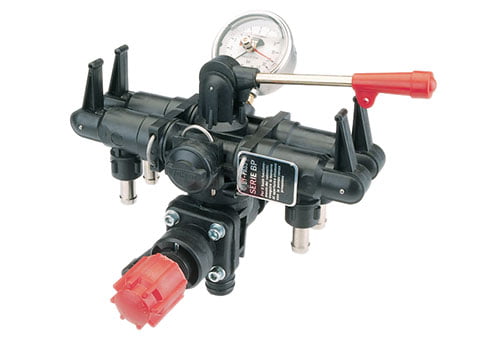Important Variables to Think About When Selecting Control Valves
Important Variables to Think About When Selecting Control Valves
Blog Article

Maximize Power Savings and Convenience With Advanced Building Automation Controls
In the realm of modern-day architecture and facility management, the integration of sophisticated building automation controls stands as a crucial innovation. The convergence of innovation and sustainability has birthed a new era where energy effectiveness, comfort optimization, and functional streamlining are no longer distant ambitions yet possible truths. By harnessing the power of automation, structures can adjust, respond, and evolve in manner ins which were once unthinkable. The capacity for substantial energy savings and boosted convenience is not simply an opportunity yet an assurance waiting to be satisfied. This paradigm shift in building monitoring holds the crucial to unlocking a world where ecological conscientiousness and passenger health sympathetically exist together within the wall surfaces of our frameworks.
Power Efficiency Advantages
Energy effectiveness advantages can considerably lower energy consumption and functional expenses in structures. By applying energy-efficient techniques and innovations, building owners and drivers can attain substantial savings while additionally adding to environmental sustainability. One of the main advantages of boosting energy effectiveness in buildings is the decrease of energy expenses. Energy-efficient systems, such as sophisticated structure automation controls, can enhance using resources like heating, illumination, and cooling, causing lower power expenditures with time.
Furthermore, enhanced power effectiveness can extend the lifespan of building devices and systems. By operating extra effectively, heating and cooling systems, lighting fixture, and various other building components experience less wear and tear, causing decreased maintenance and replacement expenses. Furthermore, energy-efficient structures commonly regulate higher property worths and rental prices, providing lasting monetary advantages to owners.
In addition, power effectiveness can enhance passenger convenience and productivity. Correctly controlled indoor environments with ideal lighting and thermal conditions produce a more pleasurable and helpful work area, resulting in boosted worker fulfillment and performance. Generally, the energy performance advantages connected with innovative building automation controls are diverse, encompassing price financial savings, environmental stewardship, and passenger health.
Enhanced Comfort Control
Enhancing comfort control in structure settings needs a sophisticated combination of innovative automation systems for optimum resident well-being. By making use of sophisticated structure automation controls, facilities can tailor the interior environment to fulfill the specific needs and preferences of passengers. control valves.
By including these innovative controls, buildings can not only improve convenience however also improve power efficiency by enhancing system procedures based on actual occupancy and usage patterns. Inevitably, focusing on resident convenience via innovative automation systems leads to an extra enjoyable and healthier indoor atmosphere.
Functional Effectiveness Improvements

Furthermore, the application of real-time monitoring and analytics tools enables building operators to determine energy ineffectiveness and functional anomalies promptly. By continuously monitoring energy usage patterns and system performance metrics, adjustments can be made in real-time to enhance energy consumption and ensure peak operational performance. control valves. Additionally, incorporating demand response approaches right into building automation controls can additionally boost operational efficiency by dynamically changing energy use based upon grid problems and pricing signals
Indoor Climate Optimization
Effective indoor environment optimization is a fundamental facet of structure automation controls, ensuring residents' comfort and health while making best use of power savings. By making use of advanced sensing units and controls, developing automation systems can continuously check and adjust temperature, humidity degrees, air high quality, and ventilation to produce an optimum interior setting. Preserving comfy and regular conditions not just improves owner satisfaction however additionally boosts performance and total well-being.
Interior climate optimization additionally plays a crucial role in energy effectiveness. By fine-tuning heating, ventilation, and air conditioning systems based upon real-time information and occupancy patterns, constructing automation controls can substantially reduce energy usage - control valves. Executing methods such as demand-controlled ventilation and thermal zoning can assist minimize power waste while guaranteeing that each area of the structure gets the essential conditioning.

Sustainable Setting Development
Building automation manages not only enhance interior climate problems for power performance and occupant comfort however likewise lay the structure for creating a lasting environment with calculated administration of systems and sources. By incorporating innovative structure automation innovations, such as sensing units, actuators, and smart software, centers can keep track of and adjust energy usage in real-time to lessen waste and minimize their carbon impact. These systems make it possible click now for predictive maintenance, identifying prospective concerns prior to they escalate and maximizing devices performance visit site to enhance longevity and effectiveness.
In addition, lasting environment development extends past energy administration to encompass water preservation, waste decrease, and interior air top quality renovation. Building automation controls can manage water usage, find leakages, and ensure proper waste disposal methods, adding to total sustainability efforts. Additionally, by keeping track of and controlling air flow and purification systems, these innovations improve resident health and performance while lowering energy consumption connected with HVAC procedures.
Verdict
To conclude, advanced building automation manages deal considerable advantages in regards to power savings, comfort control, functional performance, indoor environment optimization, and producing a sustainable environment. By applying these controls, buildings can achieve ideal performance while minimizing energy consumption and improving occupant comfort. It is apparent that using sophisticated automation innovation is vital in enhancing building performance and producing a more lasting future.
Energy performance benefits can dramatically lower energy usage and operational costs in buildings. Overall, the power efficiency benefits associated with innovative building automation controls are diverse, including expense savings, ecological stewardship, and owner well-being.
In addition, including need response methods right into building automation controls can better boost operational efficiency by dynamically adjusting power usage based on grid conditions and prices signals.
Structure automation regulates not only maximize interior environment conditions for energy efficiency and occupant convenience however also lay the foundation for producing a lasting environment with critical management of sources and systems.In conclusion, progressed structure automation controls offer significant advantages in terms of power financial savings, comfort control, operational performance, interior climate optimization, and producing a sustainable setting.
Report this page